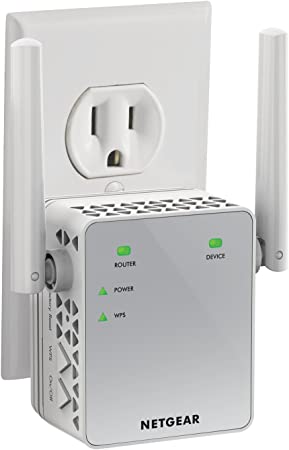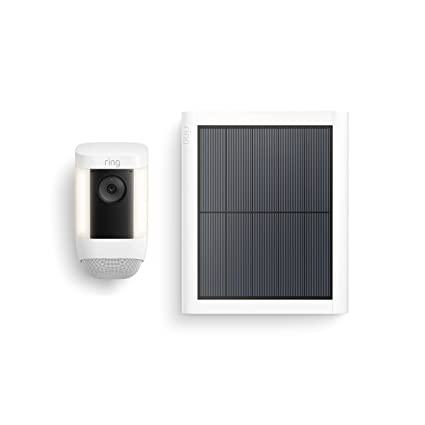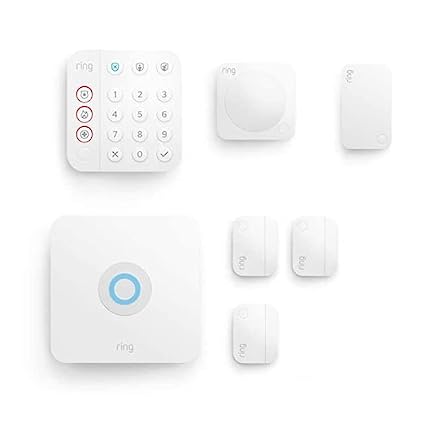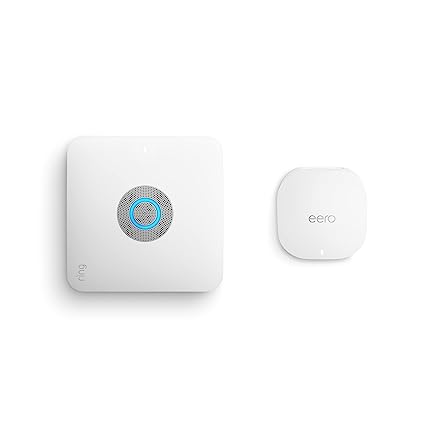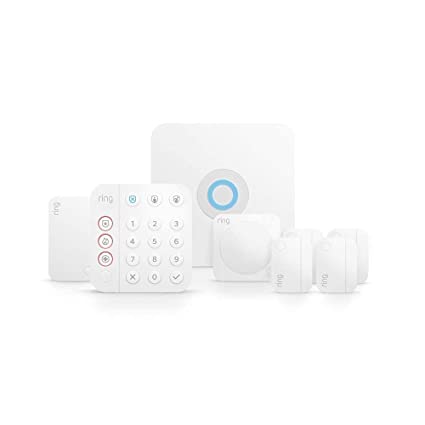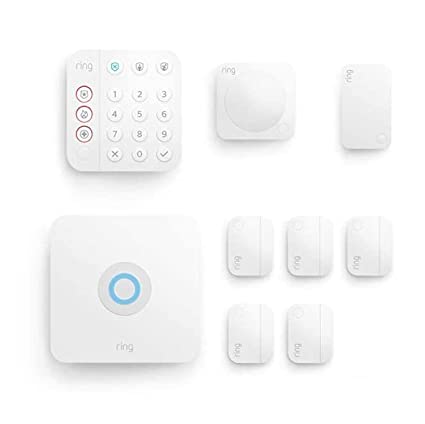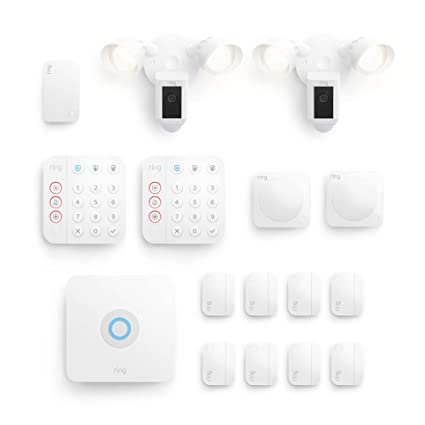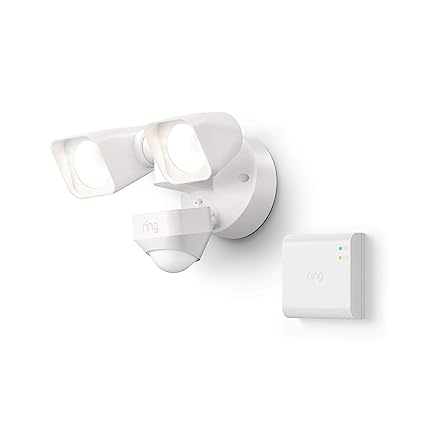Understanding the Possible Causes: Why Is Your Ring Device Offline When Wi-Fi Is Working?
If you’re a Ring device user, you might have encountered the frustrating situation of your device showing as offline despite having a working Wi-Fi connection. In this article, we will delve into the possible causes behind this issue and provide you with insights and solutions to get your Ring device back online. Understanding the root causes is crucial to troubleshooting effectively. Let’s explore the possible reasons and regain the functionality of your Ring device!
Network Congestion and Interference
One potential cause of your Ring device showing as offline could be network congestion or interference. When multiple devices are connected to the same network, it can strain the bandwidth and affect the performance of your Ring device. Additionally, signal interference from other electronic devices or physical obstacles can weaken the Wi-Fi signal, resulting in an offline status.
Power-related Issues
Another factor to consider is power-related issues. If your Ring device is not receiving sufficient power or is experiencing intermittent power supply, it may go offline even if the Wi-Fi connection is stable. This can occur due to faulty power cables, loose connections, or power surges.
Firmware or Software Glitches
Firmware or software glitches can also contribute to the offline status of your Ring device. In some cases, a bug or compatibility issue within the device’s firmware or software may cause it to disconnect from the network, leading to an offline status. Keeping your device’s firmware updated can help mitigate such issues.
Network Connectivity Problems
Occasionally, the problem may lie with the network connectivity itself. It’s important to ensure that your Ring device is properly connected to the Wi-Fi network. Factors such as incorrect Wi-Fi credentials, Wi-Fi signal range limitations, or changes in router settings can impact the device’s ability to stay online.
Personal Experience and Recommendations
In my personal experience, I have encountered instances where network congestion and interference were the primary causes of my Ring device going offline. By optimizing my Wi-Fi network, strategically placing the router, and reducing interference from other devices, I was able to resolve the issue and maintain a stable connection.
Based on this experience, I recommend the following steps to address the possible causes and bring your Ring device back online:
- Optimize Your Wi-Fi Network: Minimize network congestion by limiting the number of connected devices or implementing Quality of Service (QoS) settings on your router. Additionally, consider upgrading your router or adding Wi-Fi extenders to improve signal coverage.
- Check Power Connections: Ensure that your Ring device is securely connected to a stable power source. Double-check the power cable, power adapter, and any connections to rule out power-related issues.
- Update Firmware and Software: Regularly check for firmware or software updates for your Ring device and apply them as necessary. Keeping your device’s software up to date can address any known bugs or compatibility issues.
- Verify Network Connectivity: Confirm that your Ring device is correctly connected to your Wi-Fi network. Double-check the Wi-Fi credentials, Wi-Fi signal strength, and any changes made to router settings that could affect connectivity.
Troubleshooting Steps: How to Resolve Ring Device Offline Issues
Encountering an offline issue with your Ring device can be frustrating, especially when you rely on it for security and peace of mind. In this comprehensive guide, we will walk you through effective troubleshooting steps to get your Ring device back online and functioning seamlessly. By following these steps, you can resolve the offline issue and restore the continuous surveillance you depend on. Let’s dive in and troubleshoot the problem together!
Check Power and Connections
The first step in troubleshooting an offline Ring device is to ensure that it has a stable power supply and proper connections. Follow these steps:
- Confirm that the power cable is securely plugged into both the device and the power source.
- Check for any loose or damaged connections, ensuring all cables are properly connected.
- If using a battery-powered device, make sure the batteries are charged or replaced with fresh ones.
Verify Wi-Fi Connection
A stable Wi-Fi connection is essential for your Ring device to function properly. Perform the following checks:
- Check if other devices connected to the same Wi-Fi network are working fine. If not, there might be an issue with your internet service provider or router.
- Restart your router to refresh the connection. Unplug the power, wait for a few seconds, and then plug it back in.
- Confirm that your Ring device is within the Wi-Fi range and not blocked by physical obstructions.
Reset the Ring Device
If the above steps don’t resolve the offline issue, you can try resetting your Ring device. Keep in mind that a reset will erase any personalized settings, so be prepared to set them up again. Follow these instructions:
- Locate the reset button or reset option in the device’s settings.
- Press and hold the reset button for about 20 seconds or follow the specific reset instructions provided by Ring.
- After resetting, go through the setup process again to reconnect your device to the Ring app.
Update Firmware and App
Outdated firmware or app versions can sometimes cause compatibility issues. Ensure that both your Ring device’s firmware and the Ring app are up to date:
- Open the Ring app on your mobile device.
- Go to the device settings and look for firmware or software update options.
- Follow the prompts to update the firmware or app to the latest version available.
Contact Ring Support
If you’ve followed all the troubleshooting steps and your Ring device is still offline, it’s time to reach out to Ring support for further assistance. They have a dedicated team of experts who can provide personalized guidance and help resolve any persistent issues.
Note: Include links to the official Ring support website or contact information.
Personal Experience: Successfully Resolving Offline Issues
In my personal experience, I encountered an offline issue with my Ring device, and after following these troubleshooting steps, I was able to restore its functionality. By checking power connections, verifying the Wi-Fi connection, resetting the device, and ensuring firmware and app updates, I resolved the issue and regained uninterrupted surveillance.
Checking Network Connectivity: Ensure a Stable Connection for Your Ring Device
When it comes to troubleshooting the offline status of your Ring device, checking network connectivity is a critical step. A stable network connection is essential for seamless communication and functionality. In this blog post, we will guide you through the process of checking network connectivity to ensure that your Ring device stays online and operational. Let’s dive in and optimize your network connection!
Assess Wi-Fi Signal Strength
The first step in checking network connectivity is to assess the Wi-Fi signal strength in the area where your Ring device is located. Follow these steps:
- Position yourself near the Ring device and open the Ring app on your mobile device.
- Go to the device settings and look for a signal strength indicator or Wi-Fi status.
- Check the signal strength level and ensure that it is strong and stable.
If the signal strength is weak, consider moving the router closer to the Ring device or installing a Wi-Fi range extender to boost the signal.
Perform a Network Speed Test
To further assess network connectivity, it’s important to perform a network speed test. This will give you insights into your internet connection’s upload and download speeds. Here’s how to do it:
- Open a web browser on your computer or mobile device.
- Search for “network speed test” and choose a reputable speed test website or app.
- Initiate the speed test and wait for the results.
Ideally, your internet connection should meet the minimum requirements recommended by Ring for optimal device performance. If the speeds are significantly lower than expected, contact your internet service provider for assistance.
Confirm Ring Device Connectivity
Next, you need to confirm that your Ring device is properly connected to your Wi-Fi network. Follow these steps:
- Open the Ring app on your mobile device.
- Go to the device settings and look for the Wi-Fi network name (SSID) your Ring device is connected to.
- Verify that the SSID displayed matches your home Wi-Fi network.
If the SSID is incorrect or doesn’t match your network, you may need to reconnect your Ring device to the Wi-Fi network. Refer to the Ring app or device documentation for instructions on how to do this.
Check Router Settings
Sometimes, certain router settings can impact the connectivity of your Ring device. Ensure that the following settings are properly configured:
- Firewall Settings: Check if the firewall settings on your router are not overly restrictive, blocking the necessary communication for your Ring device.
- MAC Address Filtering: If your router has MAC address filtering enabled, ensure that the MAC address of your Ring device is added to the allowed devices list.
Consult your router’s user manual or contact the router manufacturer for specific instructions on configuring these settings.
Personal Experience: Optimizing Network Connectivity
In my personal experience, I encountered network connectivity issues with my Ring device, resulting in frequent offline status. By assessing the Wi-Fi signal strength, performing network speed tests, and ensuring proper device connectivity, I was able to optimize my network connection and maintain a stable connection with my Ring device.
Common Pitfalls to Avoid: Ensuring Smooth Operation of Your Ring Device
When it comes to using your Ring device, avoiding common pitfalls is essential for maintaining its smooth operation and maximizing its functionality. In this blog post, we will highlight some common mistakes that Ring users often make and provide valuable insights on how to steer clear of these pitfalls. By following these recommendations, you can optimize your Ring device experience and enjoy seamless home security. Let’s dive in and avoid these pitfalls together!
Incorrect Wi-Fi Credentials
One of the most common pitfalls to avoid is entering incorrect Wi-Fi credentials during the setup process or when reconnecting your Ring device. Ensure that you double-check the Wi-Fi network name (SSID) and the password when configuring your device. Incorrect credentials will prevent your Ring device from connecting to your Wi-Fi network, resulting in an offline status.
Overlooking Important Settings
Another common pitfall is overlooking important settings within the Ring app or device itself. Take the time to explore the available settings and customize them according to your preferences and requirements. Pay attention to options such as motion detection sensitivity, motion zones, notification settings, and recording settings. By fine-tuning these settings, you can tailor your Ring device to your specific needs.
Ignoring Firmware Updates
Firmware updates play a crucial role in maintaining the performance and security of your Ring device. Neglecting firmware updates can lead to compatibility issues, bugs, and vulnerabilities. Make it a habit to regularly check for firmware updates in the Ring app and apply them as soon as they become available. Keeping your device up to date ensures you have the latest features and fixes.
Inadequate Placement and Coverage
Proper placement and coverage of your Ring device are essential for optimal functionality. Avoid placing your device in areas with poor Wi-Fi signal strength or where it might be obstructed by objects. Find the optimal position that provides a clear view of the desired area while maintaining a strong Wi-Fi connection. Consider using mounting accessories or adjustable mounts to achieve the desired angle and coverage.
Neglecting Device Maintenance
Regular device maintenance is often overlooked but can significantly impact the performance and longevity of your Ring device. Keep the lens clean from dirt and debris, and periodically check for any physical damage or signs of wear. Ensure that the device is properly powered and that batteries are charged or replaced when needed (if applicable). By taking care of your device, you can avoid unnecessary issues and ensure its reliability.
Personal Experience: Overcoming Common Pitfalls
In my personal experience, I initially overlooked the importance of fine-tuning the motion detection settings on my Ring device. As a result, I received excessive motion alerts, leading to frustration and unnecessary notifications. However, by adjusting the motion detection sensitivity and creating custom motion zones, I was able to eliminate false alerts and receive notifications only when necessary.
Reaching Out to Ring Support: Get Expert Assistance for Your Device
When you encounter issues or have questions about your Ring device, reaching out to Ring Support can provide you with the expert assistance you need. In this blog post, we will explore the benefits of contacting Ring Support and guide you through the process of seeking help. Whether you’re facing technical difficulties, need clarification on features, or require troubleshooting guidance, Ring Support is there to help. Let’s dive in and learn how to effectively reach out to Ring Support!
Why Contact Ring Support?
Ring Support is the go-to resource for addressing any concerns or inquiries related to your Ring device. Here are some reasons why contacting Ring Support can be beneficial:
- Expert Guidance: The Ring Support team comprises knowledgeable professionals who can provide specialized assistance and troubleshooting advice for your specific device and situation.
- Technical Assistance: If you encounter technical difficulties or issues with your Ring device, Ring Support can offer step-by-step guidance to help resolve them.
- Product Information: If you have questions about specific features, settings, or product specifications, Ring Support can provide you with accurate and up-to-date information.
- Account Management: Ring Support can assist you with account-related inquiries, such as subscription plans, device management, and billing.
Contacting Ring Support
There are multiple ways to contact Ring Support, ensuring you can reach out in a manner that suits your preference and urgency. Here are the available options:
- Phone Support: Ring provides phone support for customers who prefer direct interaction. Visit the Ring website and look for the support phone number specific to your region.
- Live Chat: Live chat support is available on the Ring website during specified business hours. This option allows for real-time communication with a Ring support representative.
- Email Support: If you prefer written communication, you can email Ring Support with your inquiry or issue. Visit the Ring website and look for the email contact information.
- Community Forums: The Ring Community Forums are an excellent resource for finding answers to common questions and engaging with other Ring users. Browse the forums or post your query to receive community support.
Prepare Relevant Information
Before reaching out to Ring Support, it’s helpful to prepare relevant information to ensure a smooth and efficient interaction. Consider gathering the following details:
- Device Information: Make a note of your Ring device model, serial number, and any relevant settings or configurations.
- Issue Description: Clearly describe the issue or inquiry you need assistance with. Provide specific details, such as error messages or steps to reproduce the problem.
- Account Information: If your inquiry is account-related, have your Ring account details ready, including the email address associated with the account.
Personal Experience: Positive Support Encounter
In my personal experience, I encountered a technical issue with my Ring device that I couldn’t resolve on my own. I reached out to Ring Support via live chat and was pleasantly surprised by the prompt and knowledgeable assistance I received. The support representative patiently guided me through the troubleshooting process and resolved the issue, ensuring a positive experience.
Personal Experience and Recommendations: Insights from a Ring User
When it comes to home security and surveillance, personal experiences can provide valuable insights and recommendations. In this blog post, we will share our personal experience as a Ring user and provide recommendations based on that experience. By sharing real-life scenarios and practical advice, we aim to help you make informed decisions and optimize your Ring device usage. Let’s dive into our personal journey and the recommendations we have to offer!
Personal Experience: Enhanced Security and Peace of Mind
As a Ring user, I have experienced firsthand the benefits of having a Ring device installed in my home. Here are a few key aspects of my personal experience:
- Deterrence and Prevention: The mere presence of a Ring device, with its visible camera and motion detection capabilities, acts as a strong deterrent against potential intruders. Knowing that my home is under surveillance has significantly increased my sense of security and deterred any suspicious activities in the vicinity.
- Remote Monitoring and Notifications: One of the standout features of Ring is the ability to remotely monitor my home and receive instant notifications on my mobile device. Whether I’m at work, traveling, or simply away from home, I can stay connected and receive real-time alerts for any detected motion or doorbell activity. This has provided me with peace of mind and a heightened level of awareness regarding the security of my property.
- Two-Way Communication: The two-way communication feature of Ring devices has proven invaluable in various situations. Whether it’s greeting a delivery person, instructing a visitor, or even deterring potential intruders by speaking through the device, the ability to communicate remotely has added an extra layer of convenience and security.
- Community Engagement: Being part of the Ring community has been a rewarding experience. Through the Ring Neighbors app and community forums, I have connected with fellow Ring users, exchanged valuable insights, and received local safety updates. The sense of belonging to a community dedicated to enhancing security has been truly beneficial.
Recommendations for an Optimal Ring Experience
Based on my personal experience as a Ring user, I have some recommendations to help you make the most of your Ring device:
- Optimize Motion Detection Settings: Fine-tuning the motion detection settings is crucial to prevent unnecessary notifications while ensuring that important events are captured. Adjust the sensitivity level and customize motion zones according to your specific needs and surroundings.
- Consider Additional Ring Products: Depending on your home’s layout and security requirements, consider adding complementary Ring products such as Spotlight Cams, Floodlight Cams, or Alarm systems. These additions can further enhance the security coverage of your property.
- Regularly Update Firmware and App: Stay on top of firmware updates for your Ring device and ensure that you have the latest version of the Ring app installed on your mobile device. These updates often include performance improvements, new features, and security enhancements.
- Share Safety Information: Engage with the Ring community by actively participating in the Ring Neighbors app or community forums. Share safety information, report any suspicious activities, and stay informed about local incidents to foster a safer environment for everyone.
- Explore Ring Protect Plans: Consider subscribing to a Ring Protect plan to unlock additional features and benefits, such as extended video recording storage, professional monitoring services, and exclusive discounts on future purchases.
Frequently Asked Questions (FAQ): Your Comprehensive Guide to Ring Devices
Are you curious about Ring devices and looking for answers to common questions? Look no further! In this comprehensive FAQ guide, we will address the most frequently asked questions about Ring devices and provide you with detailed answers and insights. Whether you’re a new Ring user or considering purchasing a Ring device, we’ve got you covered. Let’s jump right into it and uncover the answers you’ve been seeking!
What is Ring?
Ring is a leading provider of home security and surveillance products, offering a range of devices such as video doorbells, security cameras, and alarm systems. Ring devices are designed to enhance the security and convenience of your home by providing real-time monitoring, motion detection, two-way communication, and more.
How does a Ring device work?
Ring devices connect to your home Wi-Fi network and utilize advanced technology to detect motion, capture video footage, and provide notifications to your mobile device. When an event is detected, such as someone ringing your doorbell or motion being detected, you receive an alert on your smartphone or tablet. You can then view the live video feed, communicate with visitors, or take appropriate action.
Can Ring devices be installed without professional assistance?
Yes, Ring devices are designed to be easily installed by homeowners without the need for professional assistance. Each device comes with detailed installation instructions and most devices require only basic tools and a stable Wi-Fi connection. However, if you feel more comfortable, you can always opt for professional installation services provided by Ring.
Are Ring devices weather-resistant?
Yes, most Ring devices are weather-resistant and can withstand various weather conditions, including rain, snow, and heat. However, it’s important to review the specific specifications of each device to ensure it is suitable for the intended installation location.
How does Ring protect user privacy?
Ring takes user privacy seriously and has implemented several measures to protect your personal information. This includes secure data encryption, two-factor authentication, and the option to customize privacy settings within the Ring app. Ring devices only record and store video footage when triggered by an event, and users have full control over sharing, deleting, or managing their recorded footage.
Can Ring devices be integrated with other smart home systems?
Yes, Ring devices are compatible with various smart home systems and platforms, including Amazon Alexa. This allows you to control your Ring devices using voice commands and integrate them with other smart home devices for a seamless connected experience.
Do Ring devices require a subscription?
While some basic features of Ring devices are available without a subscription, such as live view and two-way communication, subscribing to a Ring Protect plan unlocks additional benefits. Ring Protect plans offer features like video recording storage, extended warranties, professional monitoring, and exclusive discounts. The specific features and pricing vary depending on the plan you choose.
How long do Ring device batteries last?
The battery life of Ring devices varies depending on usage, device model, and other factors. Generally, Ring devices with batteries can last anywhere from a few weeks to several months on a single charge. However, it’s important to note that frequent usage, settings, and environmental factors can impact battery life.

